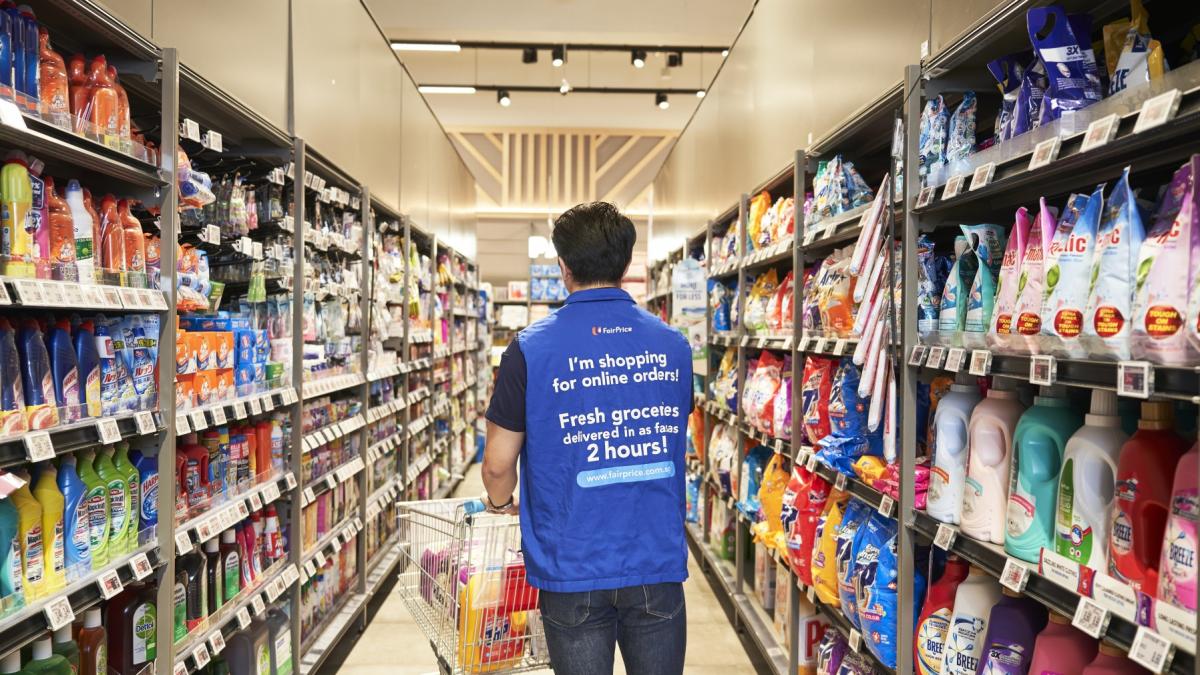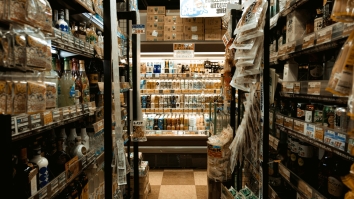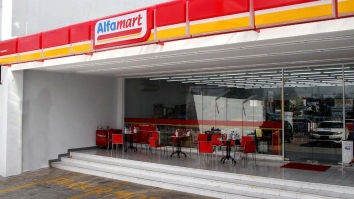
NTUC Fairprice: Building the grocery store of the future
What does the future of supermarkets look like in Singapore, and how will it change how you shop?
If you’ve ever wondered how the future of grocery might look, NTUC FairPrice is now giving you a glimpse into that space, and allowing the public to experience its new concepts for both online and offline shopping.
Talking with Singapore Business Review in a recent podcast, head of digital business at NTUC Johnny Wong explained the many innovations that Singapore's biggest online grocery platform FairPrice was soon to reveal.
Wong said the last 12 months have been challenging. When Dorscon orange was implemented, the demand for online groceries exploded. FairPrice saw as much as five times the normal peak demand.
“Nobody really plans to handle four or five times the demand at peak levels.. So obviously, we were scrambling, our websites were suffering, we could not keep up with the orders and we did not have enough trucks, not even enough real estate space to park the trucks to do the back and forth of delivering the orders,” he said.
But they rallied by relying on their in-house team. The fact that they handle their own logistics helped as well as their many networks of brick and mortar stores.
Once they found their footing, Wong said their online capacity grew as much as four to five times. Online grocery penetration went up to 15% from a previous 7%. According to Wong, COVID saw them reach targets they only expected to reach in 2022. of growth until 2022.
This challenge as well as the surge in demand for online groceries actually helped birth the new concept for the future models of online and offline groceries.
The grocery store of the future
FairPrice operates on three different models for its online grocery platform. They have the central warehouse model, an automated warehouse system that services near and far customers. Then there are the FairPrice supermarkets and hypermarkets across Singapore that make hyperlocal deliveries within a three-kilometer radius for faster grocery deliveries.
Wong said the best thing about their hyperlocal delivery system is that you can always guarantee that the fresh produce you ordered will always be fresh. He said that one of the barriers when grocery shopping online is customers are unsure whether what they ordered is really newly harvested.
“Because there are so many eyes in that hypermarket with a large supermarket, looking at the fresh produce and making sure that those fresh produce is as fresh as can be, then you can have a guarantee that vegetables and fruits like it come to you are really good,” Wong added.
In fact, 60% of orders have fresh produce on them.
But what they’ve recently started doing is creating what Wong calls "dark stores". This is a brick and mortar store that FairPrice purposely closed to the public, to cater exclusively to online deliveries. However, these ‘dark stores’ may still be a long way from full automation.
“Today, there's a lot of manual picking in the store because we just took an existing store with a fixed layout. But certainly, if we were to do a ‘dark store’ from scratch, we would be looking at a level of automation. This automation that we probably have to insert over time because we, as a social enterprise, want to keep prices affordable, as much as possible to a Singapore consumer,” Wong said
Still these ‘dark stores’ have been doing well and Wong added they were planning to open more in the future.
FairPrice didn’t just stop with its online platforms. They started experimenting recently with an upgraded in-store concept called “Scan-and-Go”, in what Wong describes as FairPrice’s many different initiatives to digitise the in-store experience.
In stores that offer the “Scan-and-Go” feature, customers are able to pick their products, use their phones to scan and pay for the items, and then simply walk out with their purchases. There are no long queues, no waiting time, and almost no contact whatsoever.
The system also uses A.I. with machine learning algorithms to determine trust scores.
“So at the moment that you walk out, you have to show a QR code to a kiosk and that kiosk essentially has some machine learning algorithms that are trying to determine the track record of that consumer, along with items that that consumer has. So for example, if you go to the store and you pick up some really expensive wines, and then this is the first time that you're doing it, you will probably have someone to come and look at your new basket and check. Fortunately, after a little bit, maybe the second or the third, or who knows the subsequent visits, and we'll know that you are actually a trustworthy customer, and therefore, it's fine,” Wong explained.
FairPrice plans to use these data to better understand customer preferences and to personalise the in-store experience. Soon, FairPrice would be able to direct you to the nearest store where you can buy what you need and even offer suggestions on what new things to try.
“Even beyond personalisation, we're looking at doing some interesting things for both an in store experience, and also the online grocery experience. So I guess what I have to say to that is stay tuned a little bit. It should be only a few months. But we have a few interesting things that will be coming to the light,” Wong said
Struggle for dominance
Competition in the online grocery store market has been fierce especially as FairPrice has to contend with giants in e-commerce like Alibaba and Amazon in Singapore’s market.
Wong, however, said he welcomes and even loves the challenge that these rivals bring.
“I love the fact that we have so much competition, because it causes us to do our best. That means that we need to be more innovative, we need to be more, in some ways, aggressive and make some really smart bets,” he said.
To challenge these giant’s, he said FairPrice will rely heavily on the various assets it has at its disposal like having the largest network of brick and mortar stores to better service every Singaporean which Wong said is their advantage against other competitors who just rely on a central warehouse model.
Wong said they have more than 140 of these brick and mortar stores spread across the country.
“When you have a supermarket that is near a consumer, then you can get the deliveries much faster, you can be more efficient with those deliveries with the truck and go back and forth. And this translates in better economics as well, that we can then pass on to our customers,” he added.
The innovations by FairPrice to become the trailblazer towards the new era of online and offline grocery shopping speaks for itself that it not only welcomes this challenge but is prepared for it.
“The key difference for us is that this is the only thing that we do. And I think that having a dedicated team focus with singular goals allows us to be much faster, much more in unison. And we only have to worry about Singapore, whereas the other players have to think about what their markets are, along with all their businesses they need to care for. And then I'm sure they will be making some compromises in terms of their priorities. Whereas our singular priority is to service Singapore for groceries in the best way,” Wong finished.























 Advertise
Advertise








